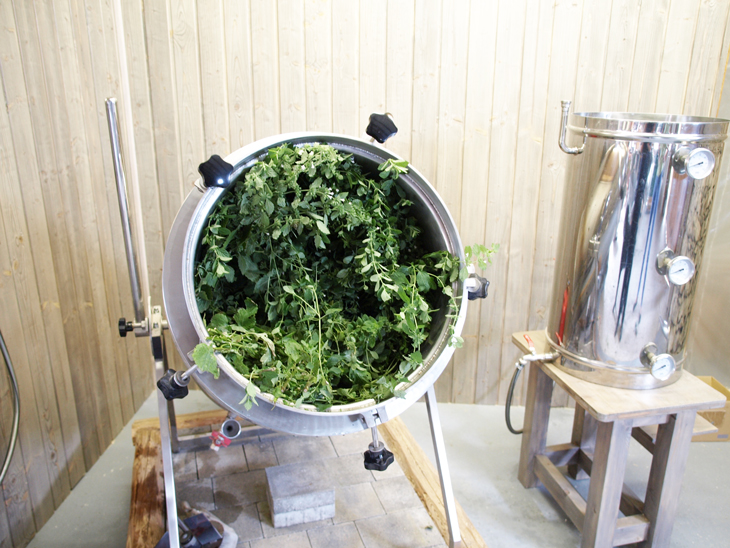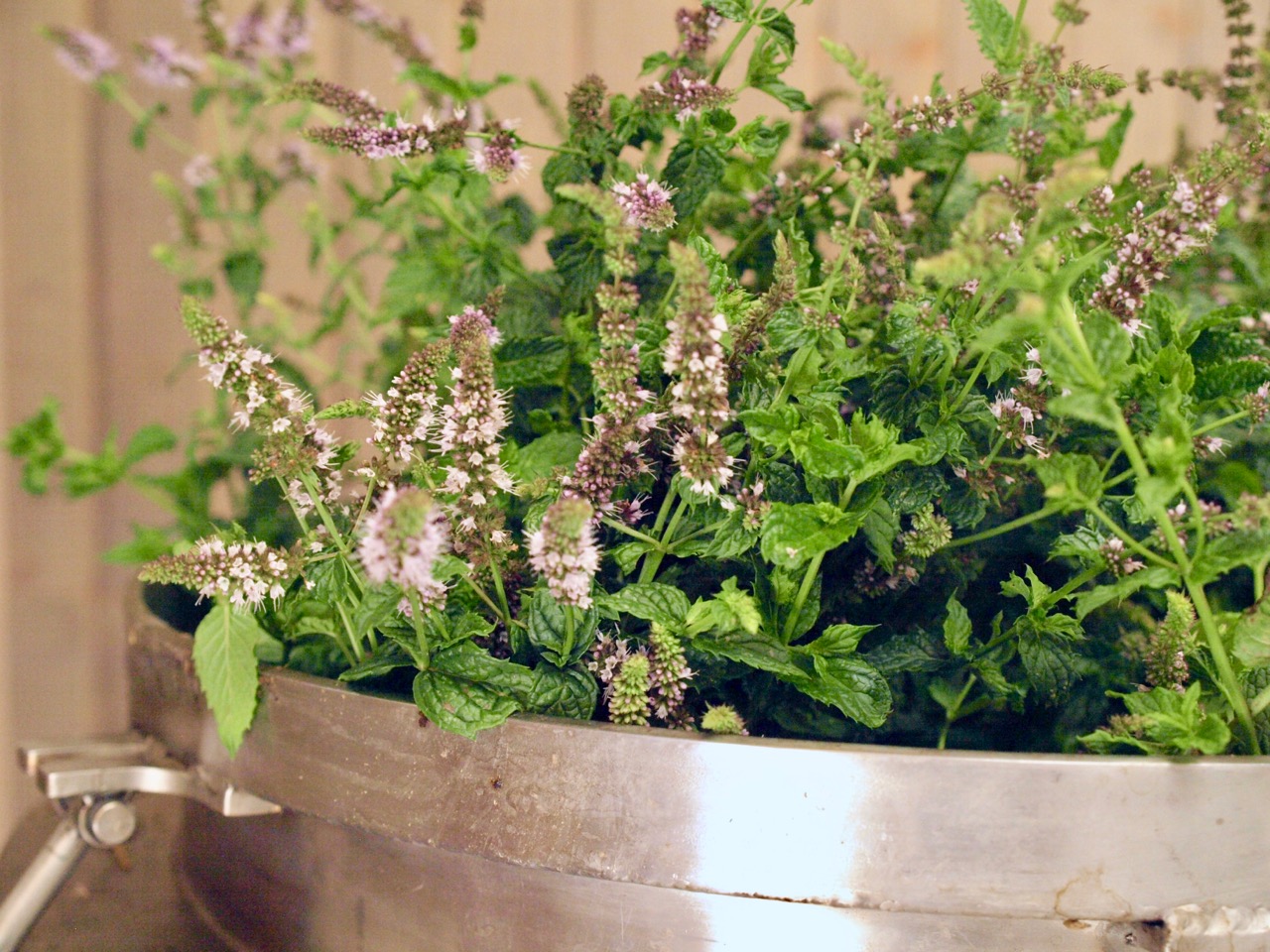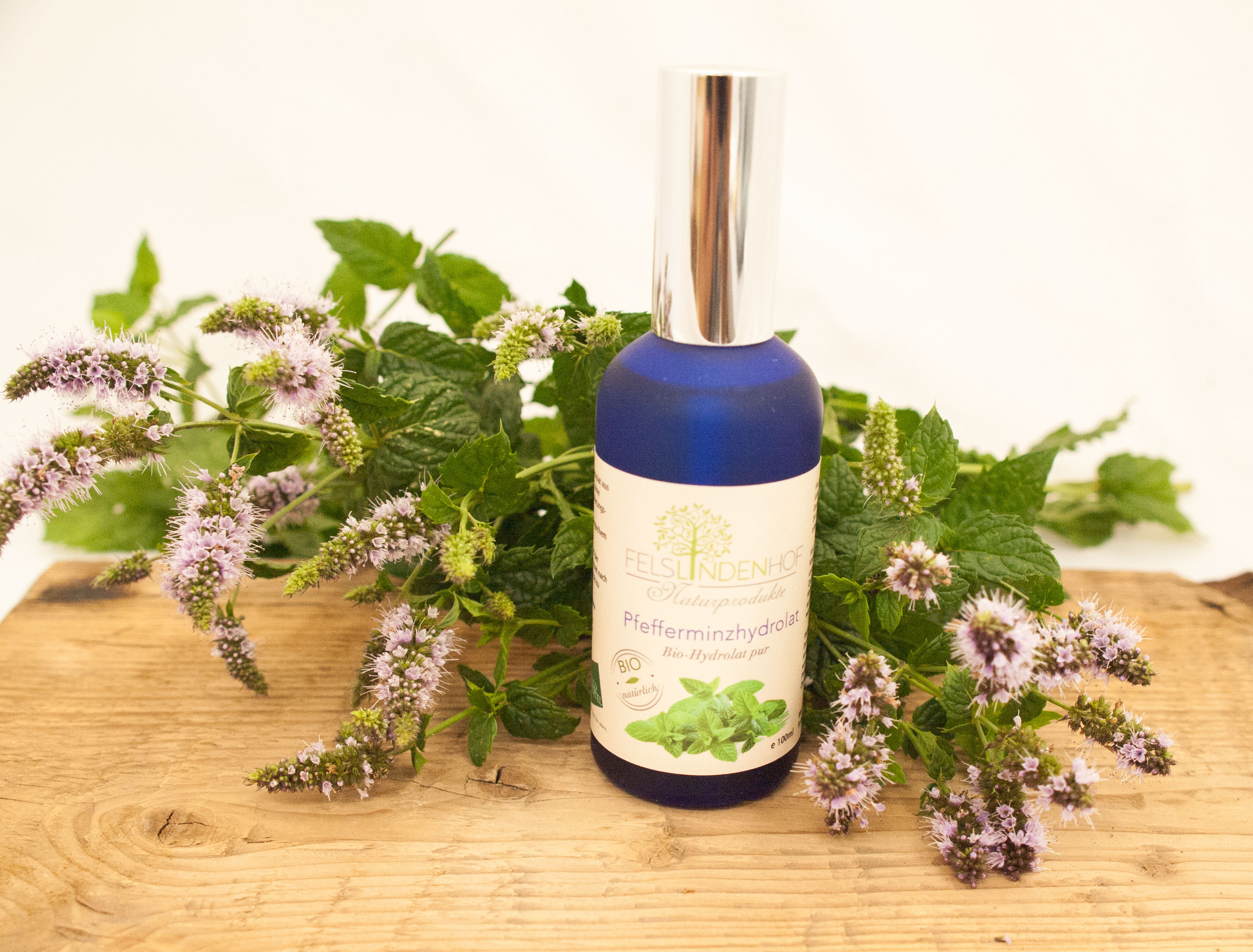
Hydrolates - production, quality and recommendation for purchase
The centers of hydrosol production can be found in the large growing areas of the relevant medicinal plants, such as Provence/France for lavender, Rosevalley in Bulgaria for Damask roses and lavender. Since hydrolates are cheap and available in abundance there, their use as a remedy and for care was established early on by the population. With us, on the other hand, hydrolates are still not very common.
Crafting

Hydrolates are formed during the steam distillation of herbs or flowers. The water vapor rises through the still filled with plant material and releases the essential oil from the plants. The steam then condenses in the refrigerator and the essential oil separates in the Florentine vase and is removed. What remains is the hydrolat, which is also called plant water.

This hydrolate now has a similar composition to the essential oil, but in a highly diluted form (dilution factor 1:600 to 1:1200). Therefore, it can be used almost without hesitation, which does not apply to essential oils. There are only a few exceptions, such as sage hydrolate, which should not be used in large quantities and, if necessary, internally in the 1-3 month of pregnancy.
Furthermore, the hydrolat also contains all water-soluble components of the plant, with additional benefits.
Quality

Hydrolat is only produced by the quality-conscious manufacturer as long as oil can be extracted from the plants. Some manufacturers, who usually only produce hydrosols in small quantities, pay less attention to this because they want to produce as large a quantity of hydrosol as possible. As a result, the concentration of the ingredients suffers. It is also about the correct filling of the still and the professionalism and experience of the distiller. Of course, you can't check these factors with merchandise.
Each hydrolate must be examined by the manufacturer/distiller for its chemical components. This analysis certificate from a recognized laboratory documents the content quality of the hydrolate.
The pH of the hydrosols varies depending on the plant and is between 3.5-6.5 pH.
When the hydrolate is stored, the pH value changes and increases. Above pH 7, the hydrolate is no longer adequately protected against contamination and can be regarded as being superimposed. It should therefore no longer be used in body care. For example, the pH of the purchased lavender hydrolate should be close to the value of the production, which is around pH 3.1-4.5. You can use a simple pH test strip to tell whether you are looking at fresh or overdue hydrolat.

Overall, of course, it is not the measurable assessment that predominates for the user, but the subjective impression of smell and taste. A peppermint hydrolate should therefore smell clearly and intensely of peppermint. Some hydrosols differ in good quality, such as the lavender hydrosol, which has a rather herbaceous and only slightly lavender scent. So if you have lavender hydrosol in front of you, which smells strongly of the well-known essential oil of the plant, the oil content is too high and a falsification can be assumed.

Recommendations for purchasing hydrolates.
Price/performance
If you are offered hydrosols, no matter which plant, in the amount of 100ml in retail (not cosmetic raw materials dealers) with a price lower than 5,-€, then it is advisable to keep your hands off it, as it is certainly about Merchandise of superimposed hydrolates.
Pay attention to the container size
Hydrolates are usually used liberally. Small containers are therefore usually used up quickly.The price per liter is around € 80-100/liter for 100ml bottles. For large containers of 1 liter to 5 liters you usually pay a liter price which is significantly lower (up to minus 60%). Therefore, when purchasing, make sure that you can purchase refill bottles for your small containers.
Proven quality
Each distributor of hydrolates must be able to produce a certificate of analysis. Not only can you find out about the composition, but you also know immediately whether the goods are reputable and fresh or not. Of course, this is time-consuming for manufacturers and retailers. Make sure that the certificate is not older than 18 months, this is the only way to ensure that you get really fresh goods.
Pure Quality
High-quality hydrolates are always those without additives, because you want a purely natural product. Hydrosols that contain alcohol and/or preservatives can be stored for a very long time. These hydrolate products are usually correspondingly old or superimposed.
Storage of hydrolates
The greatest danger when storing pure hydrolates is that contamination occurs. On the other hand, only appropriate cool and dark storage helps. Hydrolates are adequately protected with a pH below 4 pH. Nevertheless, in the interests of safety, you should ensure cool (<10 degrees C) and dark storage and consume quickly after opening.
.
